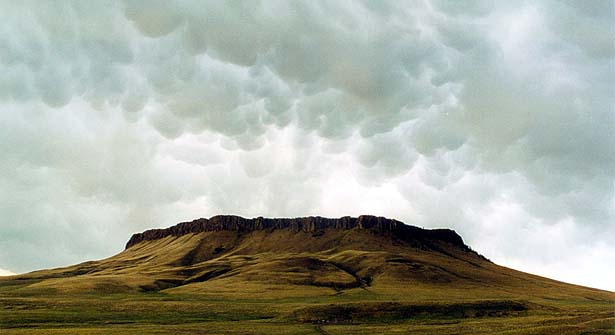

|
This photograph was taken in Broadview, Montana (30 miles NW of Billings). It shows a cloud type known as "mammatus" (or "mamma"). They were given this name because they resemble mammary glands, especially the udders of cows.
Blacksmith's Anvil . . .
Not like other clouds . . . Although they can appear threatening, the sinking air required to make these clouds actually indicates a weakening of the storm associated with them. While mammatus clouds may be observed with severe thunderstorms, they do not produce severe weather, nor should they be assumed as a definitive indicator of severe weather. When they are associated with a severe thunderstorm, they will probably be seen after the worst of a storm has past. Watch the "Recipe for a Cloud" video. Below: Mammatus clouds move over Crown Butte near Simms (20 miles west of Great Falls). To take a "virtual field trip" to Crown Butte, click on the Hot Link below.  Sources: University of Illinois at Urbana-Champaign - Department of Atmospheric Sciences, American Meteorological Society, The Weather Book Term: troposphere |

 |
Next Picture of the Week |
 |
The Weather Book |
|
Earth Science Teacher at Helena High School |